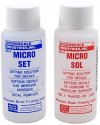Easyrider5258
SMF Supporter
Hi, all Introduced my self at the end of last year as returning to modeling after some 38 years, all quiet since because I have been building my workspace and equipment as I had nothing to start the hobby
So far have re purposed an outbuilding which is dry and insulated and used for storage, added extra heating and an old PC and generally got it fit to work in.
What I brought so far is a iwata compressor and air brush, micro saw and knifes, sprue nippers a selection of vallejo paints about 15 including some primary colors some dirt paint Micro sol/set a cutting mat, assorted brushes, thinners, alcohol, foam for masking masking tapes including frog lots of other bits and pieces
YouTube has been handy to watch builds and techniques
Also stated building a stash all in 1/48th, a Spitfire /Tempest / focke wulf TA 152 and a P51 Mustang.
Questions about Glue and putty, have brought the thin glue but notice some are using super glue and / or pva, what / when are these used?
Have Surfacer spray 1500 and putty surfacer medium for bigger gaps what putty recommended
Notice some are using oils? hows that work over acrylic, and then over sprayed with your final varnishes acrylic again?
So far have re purposed an outbuilding which is dry and insulated and used for storage, added extra heating and an old PC and generally got it fit to work in.
What I brought so far is a iwata compressor and air brush, micro saw and knifes, sprue nippers a selection of vallejo paints about 15 including some primary colors some dirt paint Micro sol/set a cutting mat, assorted brushes, thinners, alcohol, foam for masking masking tapes including frog lots of other bits and pieces
YouTube has been handy to watch builds and techniques
Also stated building a stash all in 1/48th, a Spitfire /Tempest / focke wulf TA 152 and a P51 Mustang.
Questions about Glue and putty, have brought the thin glue but notice some are using super glue and / or pva, what / when are these used?
Have Surfacer spray 1500 and putty surfacer medium for bigger gaps what putty recommended
Notice some are using oils? hows that work over acrylic, and then over sprayed with your final varnishes acrylic again?
Last edited:



